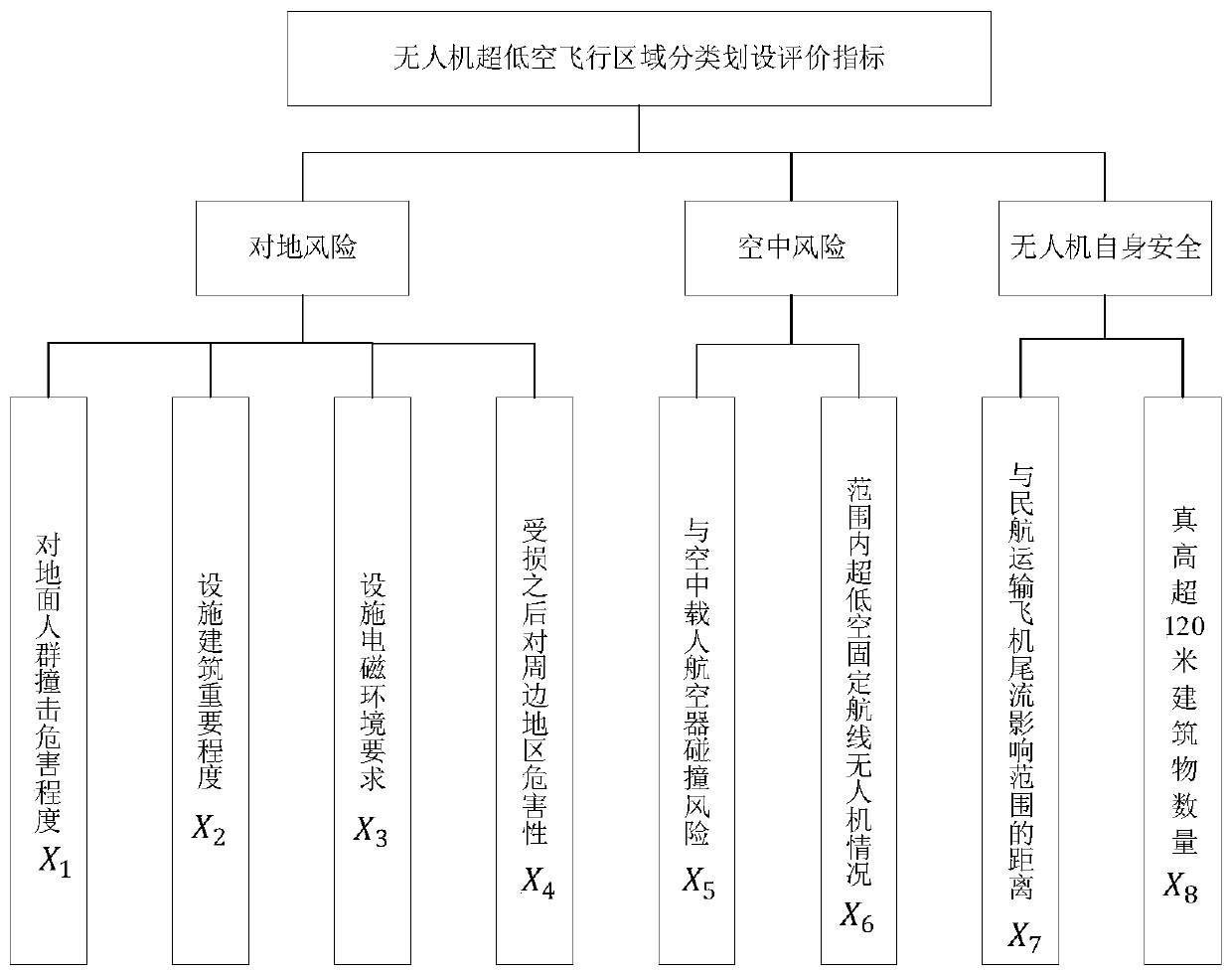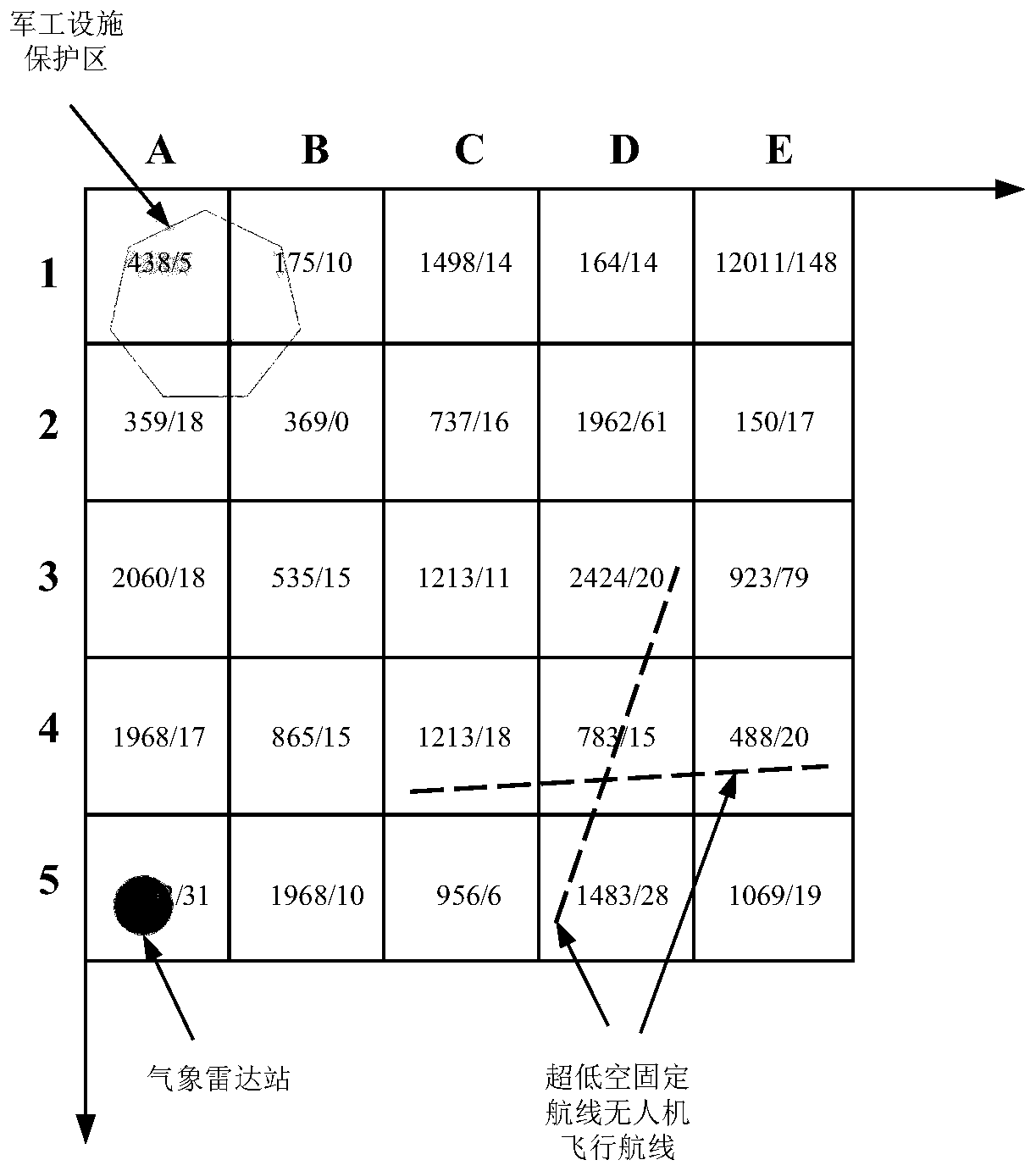Ultra-low-altitude flight area classification setting method for unmanned aerial vehicle
A low-altitude flight and area classification technology, applied to computer parts, instruments, character and pattern recognition, etc., can solve problems such as threats to national security and non-applicability
- Summary
- Abstract
- Description
- Claims
- Application Information
AI Technical Summary
Problems solved by technology
Method used
Image
Examples
Embodiment Construction
[0078] In order to make the object, technical solution and advantages of the present invention clearer, the present invention will be further described in detail below in conjunction with the accompanying drawings and embodiments. It should be understood that the specific embodiments described here are only used to explain the present invention, not to limit the present invention.
[0079] The ultra-low-altitude flight area below the true height of H meters is generally divided into a UAV flyable area and a control area. The UAV control area should have stronger restrictions on the operation of drones than the flyable area. Further, according to the actual operation needs, according to the risk of drones operating in the flyable area and control area from low to high, the drone flyable area and drone control area can be further subdivided into c 1 Subdivision type number and c 2 Subdivision types of UAV-like control area (c 1 ,c 2 ∈ N * ,c=c 1 +c 2 , that is, the number ...
PUM
 Login to View More
Login to View More Abstract
Description
Claims
Application Information
 Login to View More
Login to View More - R&D
- Intellectual Property
- Life Sciences
- Materials
- Tech Scout
- Unparalleled Data Quality
- Higher Quality Content
- 60% Fewer Hallucinations
Browse by: Latest US Patents, China's latest patents, Technical Efficacy Thesaurus, Application Domain, Technology Topic, Popular Technical Reports.
© 2025 PatSnap. All rights reserved.Legal|Privacy policy|Modern Slavery Act Transparency Statement|Sitemap|About US| Contact US: help@patsnap.com



